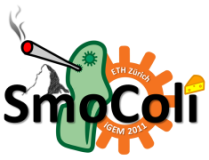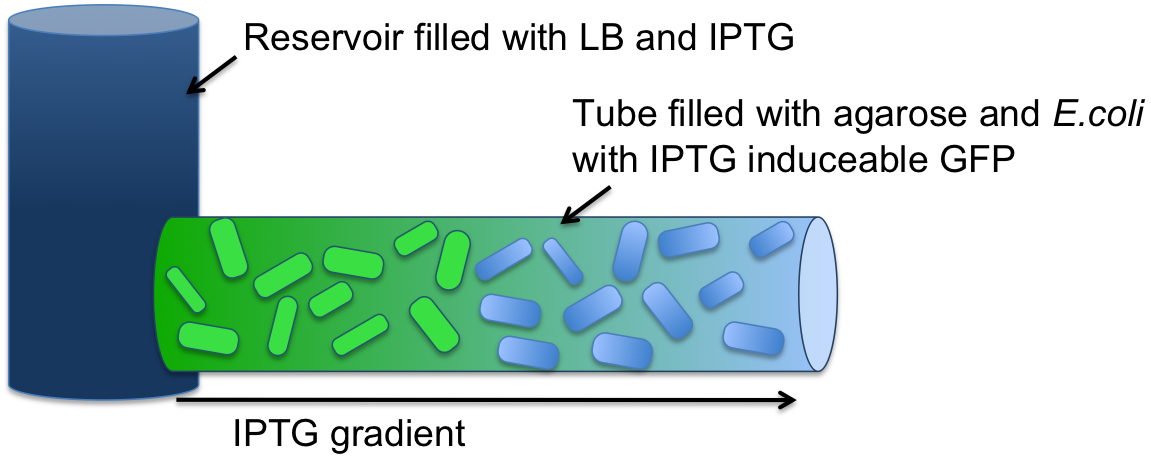Team:ETH Zurich/Process/Validation
From 2011.igem.org
(Difference between revisions)
(→Validation Description) |
(→Validation Description) |
||
| Line 13: | Line 13: | ||
{|class="roundContainer" | {|class="roundContainer" | ||
| | | | ||
| - | == | + | == Experimental Setup == |
[[File:Setup_test.png|400px|left|thumb|'''Figure 1: Experimental setup for the diffusion test in agarose filled tubes.''' ]] | [[File:Setup_test.png|400px|left|thumb|'''Figure 1: Experimental setup for the diffusion test in agarose filled tubes.''' ]] | ||
| Line 20: | Line 20: | ||
{|class="roundContainer" | {|class="roundContainer" | ||
| | | | ||
| + | == Results == | ||
| + | The experimental results (see Figure 2) show a clear gradient of the fluorescence signal over approximately | ||
[[File:ETHZ Gradient.png|800px|center|thumb|'''Figure 2: GFP gradient in tube:''' ''E. coli'' with IPTG-inducable GFP were incubated in a tube (2 mm diameter, 7 cm long). GFP expression was assessed under the fluorescent microscope after overnight incubation, with a excitation wavelength of 480 nm and a emission wavelength of 510 nm. The 15 microscope photos were reassembled into one using [http://research.microsoft.com/en-us/um/redmond/groups/ivm/ICE/ the Microsoft Research Image Composite Editor].]] | [[File:ETHZ Gradient.png|800px|center|thumb|'''Figure 2: GFP gradient in tube:''' ''E. coli'' with IPTG-inducable GFP were incubated in a tube (2 mm diameter, 7 cm long). GFP expression was assessed under the fluorescent microscope after overnight incubation, with a excitation wavelength of 480 nm and a emission wavelength of 510 nm. The 15 microscope photos were reassembled into one using [http://research.microsoft.com/en-us/um/redmond/groups/ivm/ICE/ the Microsoft Research Image Composite Editor].]] | ||
[[File:Quantification.png|800px|center|thumb|'''Figure 3: Quantification of the gradient''' in Figure 2: The light intensity of the IPTG-induced GFP signal was quantified by a 80×80 pixel moving average. The peak at around 1.2cm is due to an air bubble in the channel (see Figure 2).]] | [[File:Quantification.png|800px|center|thumb|'''Figure 3: Quantification of the gradient''' in Figure 2: The light intensity of the IPTG-induced GFP signal was quantified by a 80×80 pixel moving average. The peak at around 1.2cm is due to an air bubble in the channel (see Figure 2).]] | ||
|} | |} | ||
Revision as of 20:55, 21 September 2011
| Systems Validation |
| ||
| Text goes here | |||
Experimental SetupTo validate that we can create a gradient of a small molecule along our agarose filled tube, we filled a tube (2 mm diameter, 7 cm long) with agarose and E. coli (see Figure 1). The E. coli cells were engineered to express an IPTG-inducible GFP. The cells were incubated at 37 °C overnight. One end of the tube was connected to a sample medium (1 ml) containing 10 mM IPTG solution. |
 "
"




